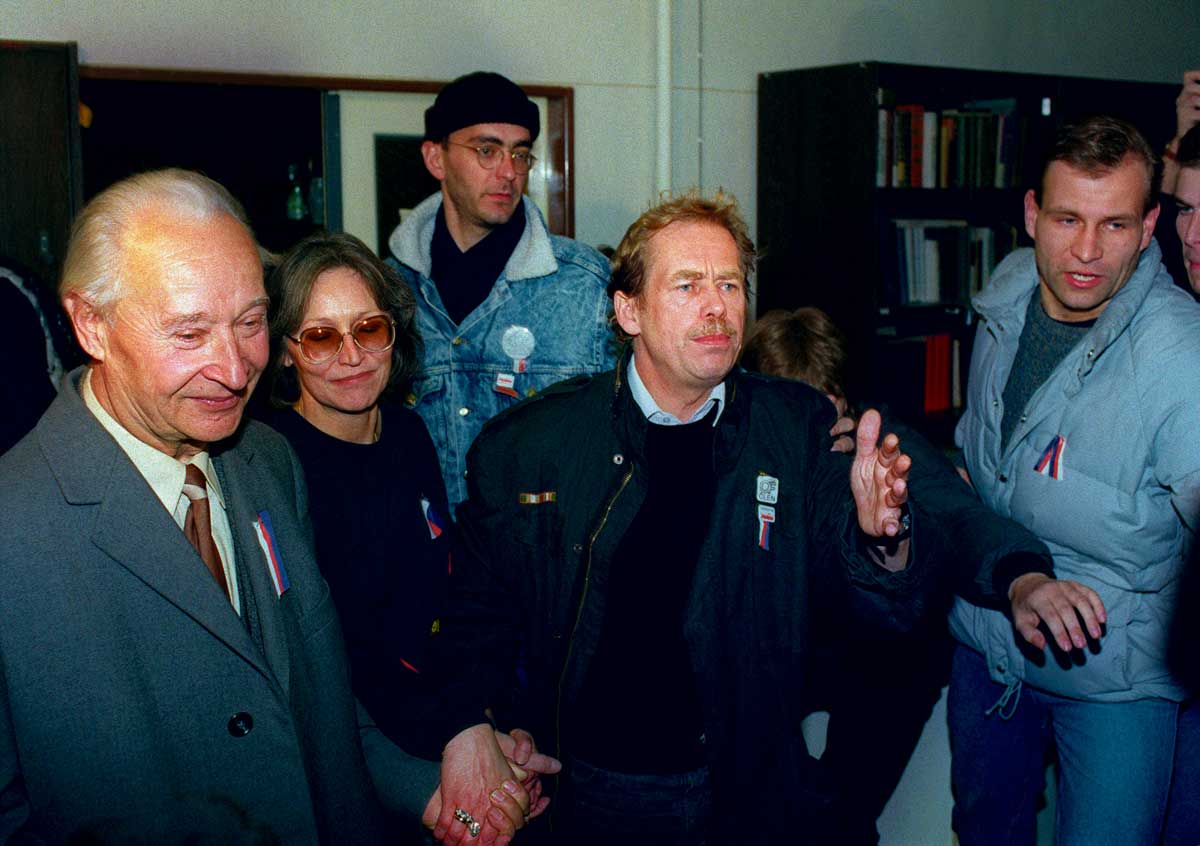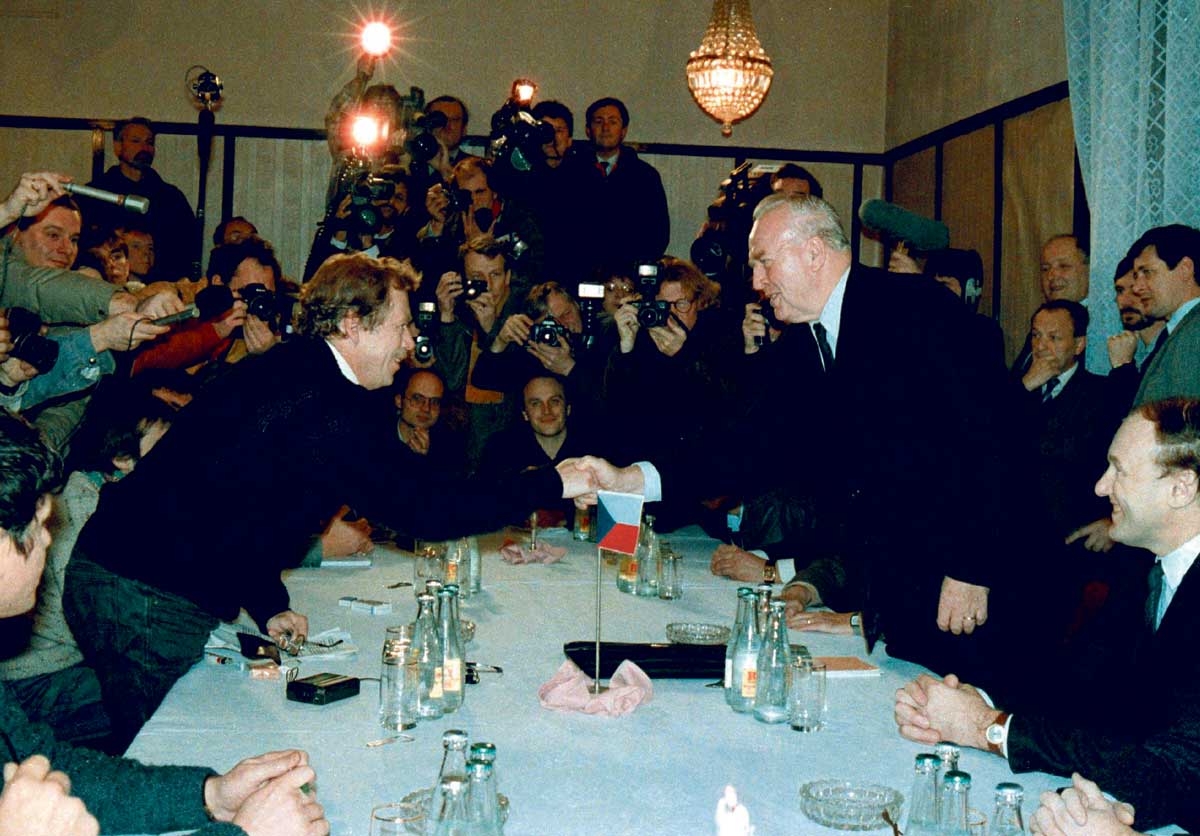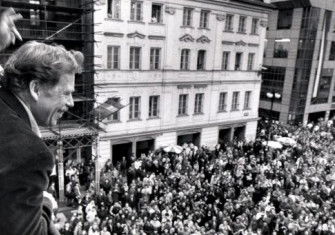The Velvet Revolution In The Regions
Viewed from Prague, the collapse of communism in Czechoslovakia was ‘joyful’. But, as some Czechs would discover, not all revolutions are equal.

In the words of the British historian Timothy Garton Ash, Czechoslovakia’s Velvet Revolution was ‘swift, entirely non-violent, joyful and funny’. Garton Ash witnessed the Velvet Revolution – so called because of the gentle manner of its passing – in Prague and his descriptions of it have come to encapsulate how most people view the ten days that brought the Czechoslovak communist regime to an end and ushered in an era of capitalism and democracy.
After all, 1989 had already seen the end of similar regimes in Poland, Hungary and East Germany. In Poland, the Solidarity movement’s goals came to fruition a decade after the organisation was founded. In Hungary, a democratisation process begun in 1988 led to a peaceful transfer of power in August 1989. The world watched on 8 November 1989, as the hardline East German government finally relented and allowed its citizens to go west. They did so immediately in memorable scenes, physically breaking down the Berlin Wall, the most tangible barrier between East and West Germany.
The hardline Czechoslovak government was even more dedicated to preserving a controlled version of socialism than Mikhail Gorbachev’s Soviet Union which, in the era of perestroika and glasnost, had begun to thaw. In Czechoslovakia, the state offered no sign of swaying from its principles. However, the prevailing sentiment in western media reports covering the regime change in 1989 and later seems to be that revolution in Czechoslovakia was inevitable, almost easy. With the revolution happening around him, Garton Ash sat in a boisterous Prague pub near Václav Havel, the dissident who would become the country’s president that December. There, Garton Ash made a prediction about the Czechoslovak communist regime’s end: ‘In Poland it took ten years, in Hungary ten months, in East Germany ten weeks: perhaps in Czechoslovakia it will take ten days!’ Events proved him right.
Good times at Wenceslas Square
Garton Ash, of course, was not the only one to propagate this image of the Velvet Revolution and it would be unfair to suggest that he made it up. He watched events unfold from Prague, where the atmosphere was jubilant. After 40 years of communist rule, the regime’s attempt to suppress a Students’ Day march-turned-protest on 17 November effectively lit a fuse under the city, bringing thousands of citizens out into the street to protest. Miloš Jakeš, General Secretary of the Communist Party of Czechoslovakia, resigned and a general strike across the country followed.
On 22 November, the beloved singer Marta Kubišová appeared on a balcony above a crowd of thousands in Prague’s Wenceslas Square, moving them to silence with a rendition of ‘A Prayer For Marta’. It was her first performance since the regime had banned her from public appearances following the Warsaw Pact invasions in 1968. On 24 November, the same crowds joyously welcomed the Prague Spring leader Alexander Dubček as he joined Havel on the same balcony. After the communist government stepped down, the protest singer Karel Kryl joined pop star Karel Gott – himself a good example of the benefits that acquiescing to the regime’s demands might have on one’s career – to sing a moving rendition of the national anthem from the same spot, as the crowd sang along and waved flags below them.

This revolution was televised, and these were the images of the Velvet Revolution that spread across the globe and are shown again and again whenever the event is commemorated. Prague, as is the case today for many of the tourists who visit, represents the entire country at this moment in history. The people celebrating on Wenceslas Square represent the Czechoslovak people. It was a powerful experience for those who took part and holds an important place in national memory – but there is another side to the story. For, while the images of Kryl and Gott may look joyful now, it was actually an ambivalent moment for Kryl, to collaborate with the regime-sanctioned pop star, Gott. As with much of the imagery that manifested itself on Wenceslas Square, it is easy to forget that not all of the country reacted to the events of November 1989 as Prague did.
You win some, you lose some
Across Czechoslovakia, people viewed the fall of the communist regime in a variety of ways. Not all of them were positive. Views, of course, tended to depend on how the regime had affected their lives. For many Czechs, the benefits that state socialism offered in job and life security were worth the loss of freedoms of speech, expression or travel. Those in rural areas were more likely to have benefitted from the planned economy. In fact, they were likely to have had an important role within it.
Take, for example, a scene in Jiří Střecha and Petr Slavík’s 1989 documentary, A Tender Revolution (Něžná revoluce). Students from Prague travelled north to a mine in Most, a city in North Bohemia, with the aim of persuading the miners there to join the nationwide general strike, a key moment in those ten days. But the miners, a fêted group in communist Czechoslovakia, met the students with anger and frustration rather than excitement.
‘If we were slacking off like you, we’d soon die of hunger and cold. That’s the miners’ opinion’, one miner responds when a group of students indicates that they want the opinions of miners rather than their management.
‘Can you tell me your opinion on all of the events?’ a student asks another miner. ‘The government should have intervened harder so that it would stay calm’, the man responds, referring to the student protest on 17 November, which the government had suppressed. ‘If those people had left earlier, they wouldn’t have gotten massacred.’ Though widespread, a rumour of fatalities at the protests was untrue.
In nearby Teplice, people were protesting, but for reasons that had nothing to do with democracy. Intensive mining activities encouraged by the regime had led to a huge amount of air pollution, which had begun to have a significant effect on the people of North Bohemia. On the day the Berlin Wall fell, thousands of people in Teplice protested for cleaner air. Local leaders and party representatives agreed to meet for negotiations on 20 November. While the purpose of these negotiations was obscured by the events in the capital, the protesters’ aim – to improve the local population’s health, rather than to change the regime – differentiated them from what was happening in the capital.

For the miners and their families, communism had guaranteed a level of prosperity and a privileged position in society that capitalism simply would not. If the miners who were interviewed for the documentary had made this assumption, unfolding events would show that they were right. The Ústí nad Labem region, where both Most and Teplice are located, is now the second poorest in the country; Prague, the richest by far, has a GDP per capita nearly three times as high as the northern region. It is no coincidence that the governor of Ústí nad Labem represents the Communist Party of Bohemia and Moravia, the direct successor of the party that once maintained a one-party rule over the country.
Not all revolutions are equal
In 2004, the film director Vojtěch Jasný returned to the village of Vyhnanice in South Bohemia where, in the 1950s, he had made a propagandistic film supporting the often brutal process of agricultural collectivisation that the communist regime was enforcing at the time. Jasný had come to regret his role in supporting the regime. His return to Vyhnanice was part of a documentary made by the directors Karel Hynie and Pavel Taussig with the intention of speaking to the people who had taken part in his original film. But he did not find universal regret among those who had worked on the collective farm. Instead, some looked back with fond nostalgia, not only for their youth, but also for a time when their position in society and, in their view, its material benefits far outstripped what they had, 15 years after the fall of communism.
‘The cooperative was good for us’, one of the women told Jasný after watching the propaganda film. ‘When the cooperative started, I had something to spread on my bread for the first time.’
‘It was the first time farm women could go to a spa for a break, or to the National Theatre in Prague’, another said. ‘These trips didn’t exist before. And now they don’t again. Who could afford it?’
The rural people whose place in society declined after the Velvet Revolution are a minority in Czechia now, just as they were while the millions of people demonstrated on behalf of freedom and democracy in Prague and elsewhere. The country gained much with the fall of communism in November 1989; but when we describe the events of the Velvet Revolution and the transformation that followed as a ‘joyful’ period, it ignores those people who experienced it otherwise.
Ilana Hartikainen works in the Department of Education at the Institute for the Study of Totalitarian Regimes in Prague. She is the co-creator of Socialism Realised: Life in Communist Czechoslovakia, 1948-89.






